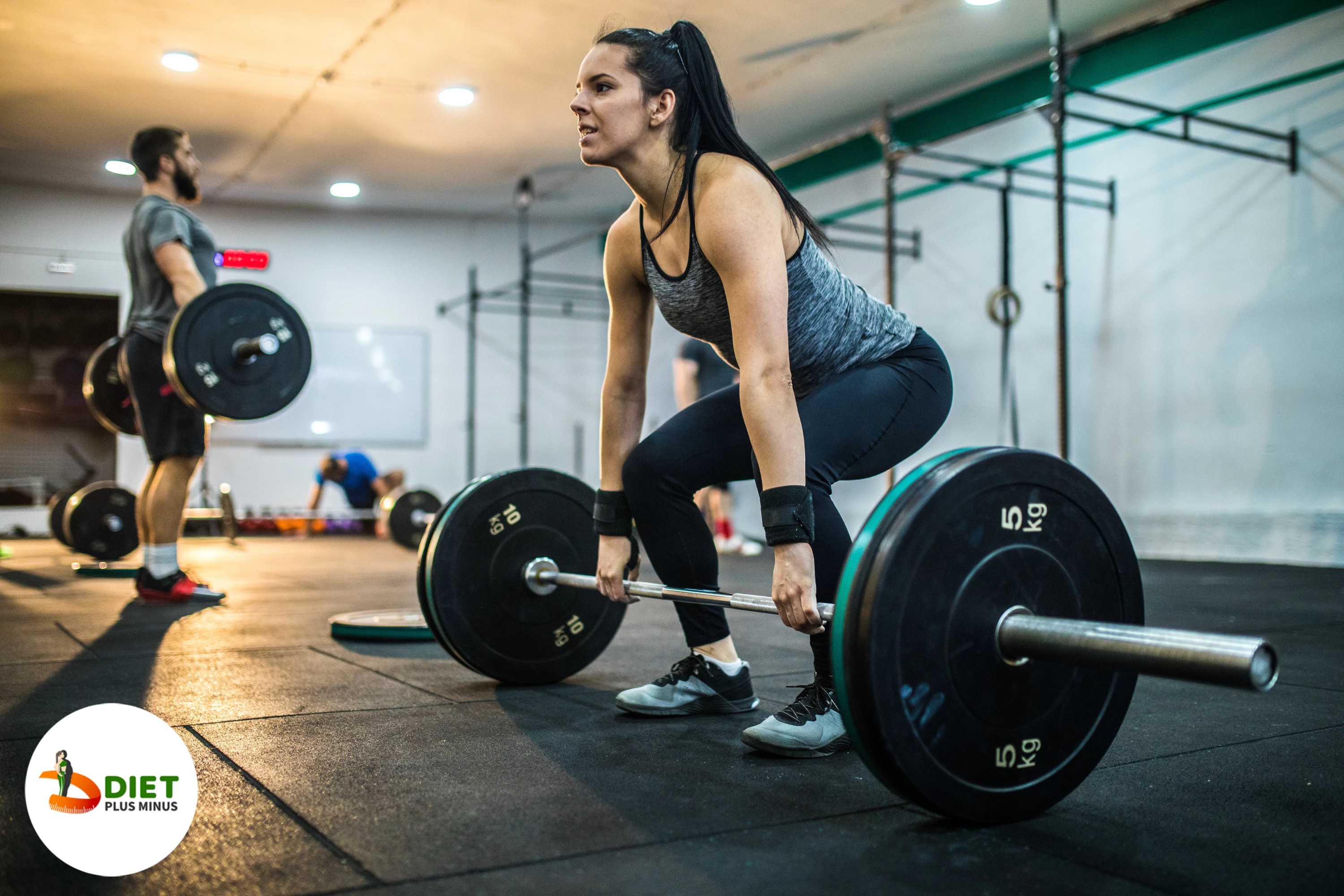Lower Back: Dead-lift

Dead-lifting
For good posture, dead-lifting strengthens the lower back. It improves spinal stability and strength when done correctly. A dead-lift involves lifting a weight from the floor and standing up straight. This exercise requires proper form, including core engagement and spine neutrality. Avoiding injury requires aligning your head and neck with your spine. Start with lighter weights until you're comfortable with form before gradually increasing weight. Proper footwear can also support and balance dead-lifts.
Deadlifting Benefits
Dead-lifting strengthens the lower back. It works your glutes, hamstrings, and traps, making it one of the best core-strengthening exercises. Dead-lifting can improve posture and lower back strength. Dead-lifts build muscle and strength safely because they require proper form. Finally, dead-lifting burns calories and improves fitness by engaging multiple muscle groups and the core.
Errors
Deadlifting with a rounded back is a common mistake. Rounding your lower back strains the spine, causing injury. Engage your core muscles and lift with your chest up to avoid this. Maintaining proper form and a neutral spine throughout the exercise is also crucial.
Lifting too much weight is another dead-lift mistake. If you lift too much, you may use momentum or jerking movements, which can damage your lower back. As you get stronger, gradually increase the weight to maintain form while challenging yourself.
Finally, dead-lifting too low can strain the knees and lower back. To avoid this, only lower yourself as far as needed for each rep before returning to standing position without rounding your spine or overextending your joints.
Tips
Start deadlifts with the bar on the floor and a flat back. Keep your chest up and bend your knees to lift properly. It is important to use correct posture in order to minimise any potential injury and maximise performance. Start with light weight to learn the lift before adding weight. Make sure that you keep your core tight throughout the motion and push through your feet on the ascent of each rep. Avoid arching or rounding your back when lifting heavier weights. Instead, squeeze your core and use leg power to lift the barbell. Finally, keep your feet and hands on the ground throughout each rep to stay balanced.
Muscles Involved
Dead-lifts work the lower back. When performing this exercise, many of the major muscle groups in the body are engaged. Deadlifts use the gluteus maximus, hamstrings, and lower back erector spinae. During deadlifts, your glutes extend and rotate your hips. Meanwhile, your hamstrings act as powerful knee flexors which aid in driving up into a standing position during this lift. Finally, full extension at lockout activates your lower back. Erector spinae muscles stabilise your spine during dead-lifting. These three muscle groups work together to strengthen and stabilise the spine and pelvis during lifting movements like dead-lifting.
Variations
Lower back strength comes from deadlifts. It can be tweaked to advance and change the movement. Changing the weight makes this exercise easier or harder. Lifting with an overhand, underhand, or mixed grip is another variation (one overhand and one underhand). You can also widen or close your feet while dead-lifting to make it easier or harder. To challenge yourself, increase weight or reps with each variation. Safety and efficacy of this exercise depend on proper form throughout all variations and progressions.
Deadlift Benefits
Deadlifts strengthen the lower back. They work the lower back, hips, and glutes. Since they work multiple muscle groups in a low-impact workout, they improve posture and strength. Dead-lifting stabilises the spine, preventing injury. Dead-lifting also increases power and speed, which is useful for sprinters and weightlifters. Finally, because each rep uses many muscle groups in different directions, dead-lifts improve balance and coordination. Dead-lifts are great for building strength and fitness for these reasons.
In Short:
Step involved:
-
Stand with your mid-foot under the bar and hold the bars about shoulder-width apart.
-
Bend your knees and lift the bar by straightening your back.
-
Stand at your full height and pause for a few seconds.
-
Lower the bar to the floor by bending the knees maintaining a straight back posture.
Do’s:
-
Always keep your back straight.
-
Grip the barbell at your shoulder width.
-
Keep your shoulders back and down.
-
Always keep the bar in contact with your legs.
-
Always coordinate the movement of your hips and knees.
Don’ts:
-
Don’t hold the bar too widely.
-
Don’t pair the workout with the heavy supersets.
